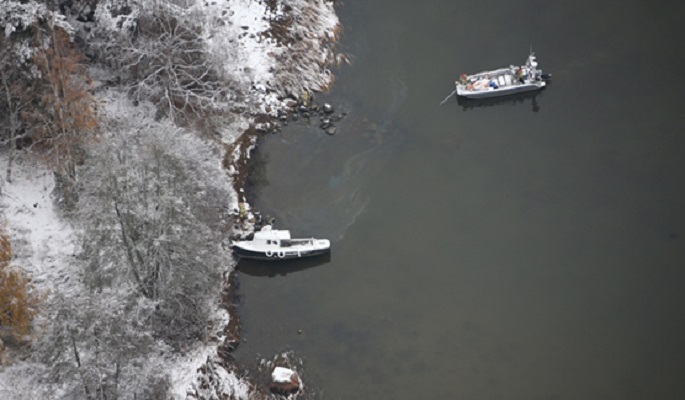Illegal oil discharge in sea on the wane
Published : 09 Mar 2018, 02:02
Updated : 09 Mar 2018, 07:29
Fewer illegal oil discharges in sea areas were reported to the Finnish authorities in 2017 than in the previous year, said a press release issued jointly by the Finnish Environment Institute (SYKE) and the Finnish Border Guard.
There were 44 incidents of oil discharges in 2017 compared to 48 in 2016.
Investigations into illegal oil discharges have begun in four cases. Most of the discharges occurred near harbours or shores and involved small amounts of oil. The largest individual discharge involved around 1,000 litres of oil.
Discharging oil into the Baltic Sea is prohibited, because the Baltic is classified as a very sensitive marine area. Discharges in open sea areas have been decreasing in recent years. Seafarers and boaters are urged to pay more attention to their activities, particularly near harbours.
Oil discharge surveillance is carried out in marine areas with the help of aerial surveillance and satellite imaging. Last year, a total of 267 satellite images were taken through the CleanSeaNet satellite imaging service of the European Maritime Safety Agency (EMSA). Any potential discharges detected in the images were verified on site.
The Baltic Marine Environment Protection Commission (HELCOM) obliges all Baltic Sea states to carry out regular aerial surveillance in their marine areas. The sensors of the surveillance aircraft used by the Finnish Border Guard can even detect oil discharges through cloud cover, up to tens of kilometres away from its route. The aircraft are also equipped with devices with vessel detection devices.
In 2017, Finnish surveillance aircraft patrolled the Baltic Sea for a total of 428 hours. The most active shipping lanes are surveyed in cooperation with other countries, particularly Sweden and Estonia.
Finland also participates actively in international surveillance operations, in which specific marine areas are more extensively surveyed by the surveillance aircraft of several countries.
Finland participated in an aerial surveillance operation coordinated by Sweden in the northern Baltic Sea on 17 October 2017. A total of four surveillance flights were completed on the day and the European Maritime Safety Agency provided one satellite image of the sea area. No oil discharges were observed during the operation.


